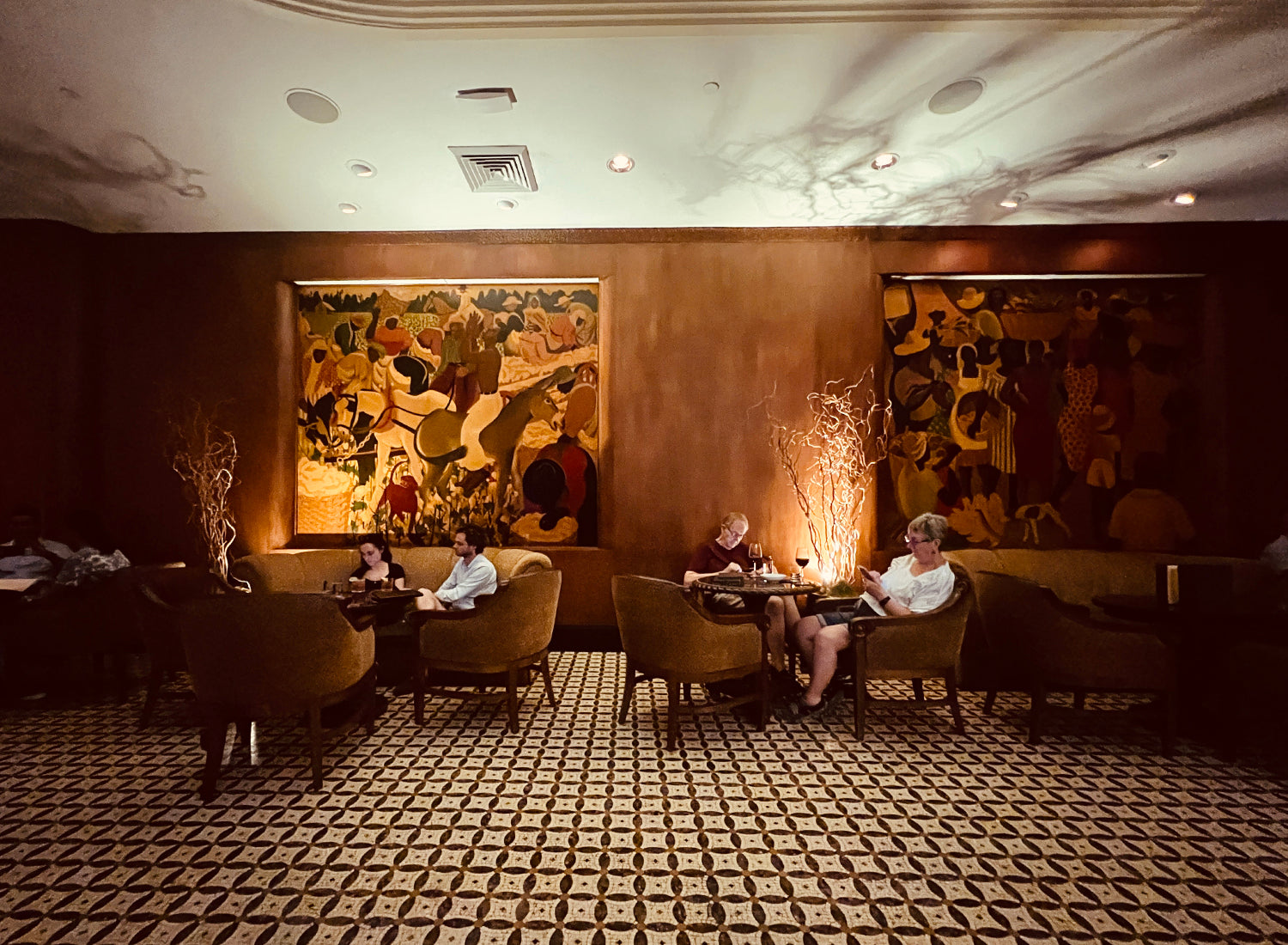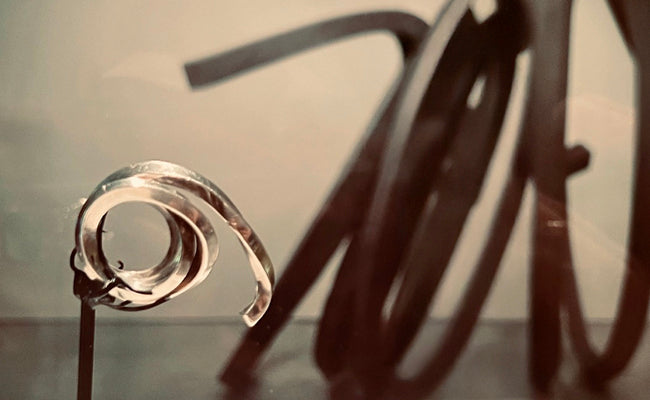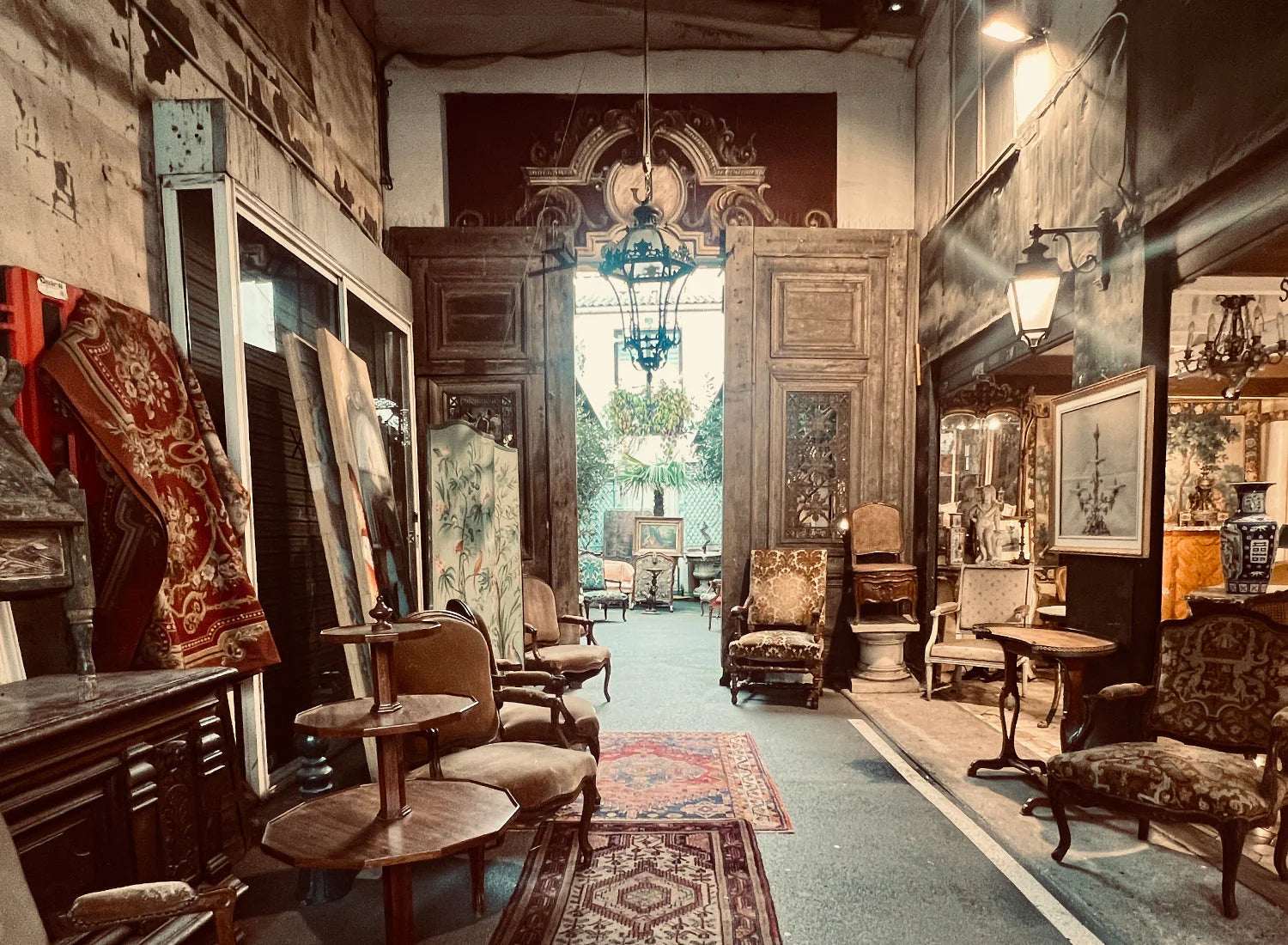Article: The Diamond Jubilee in NOLA's Sazerac Bar: A Mystery in Silver

The Diamond Jubilee in NOLA's Sazerac Bar: A Mystery in Silver
Exactly seventy-five years ago, I wouldn’t have been allowed to set foot in this bar. It wasn’t until the famous “Stormin’ of the Sazerac” in 1949 that women first demanded entrance to this dimly lit lounge tucked inside the storied Roosevelt Hotel in New Orleans. At the time, the bar enforced a longstanding policy that excluded women. Bars like this one were considered male-only spaces, where business was conducted, cigars were smoked, and women were expected to remain at the fringes, if not outside entirely.

NEW ORLEANS' ANGELO BROCATO NEARBY: A FADED ENTRANCE THAT RECALLS A TIME WHEN ESTABLISHMENTS WERE BLATANTLY DIVIDED BY GENDER —AND OFTEN BY RACE. PHOTO: ©ALLOYALIST
But on that day in 1949, a group of determined women in pretty fabulous hats (can we please bring back the brim hat?) walked in together and ordered Sazeracs in protest. Their defiance cracked open the literal door to change. Not just here, but in countless other rooms where women had long been unwelcome. Today marks the Diamond Jubilee—seventy-five years since that bold act of rebellion. Yet as patrons sip their drinks and go about their day, the occasion seems to slip by unnoticed.

A PHOTO OF THE 1949 “STORMIN’ OF THE SAZERAC” STILL HANGS IN THE SAZERAC BAR’S LOBBY, UNFORTUNATELY, WITHOUT ATTRIBUTION.
Behind the bar is an enormous, gleaming vessel with bulbous curves, and I wonder if it might be some kind of trophy commemorating this momentous event in women's history. At first glance, the piece looks like a champagne chiller (those who know are now clutching their pearls at that thought) or perhaps another grand work of sterling holloware. But contrary to the way many online descriptions suggested it was "tucked away," the piece was anything but subtle. Its commanding presence demanded attention. Then again, it’s easy to get lost in such a fabulously ornamented room.

NEW ORLEAN'S SAZERAC BAR TODAY. PHOTO: ©ALLOYALIST
A dear friend of mine, an expert in unearthing the world’s most fantastic cocktail bars, wasn’t sure what the metal vessel was, but he pointed out the murals surrounding us. According to him, they depicted the very moment women were first allowed into the bar. The scene pulsed with energy. Figures in motion, dresses swirling, jazz drifting down from above. He’d heard the story years ago at Tales of the Cocktail, New Orleans’ premier and famously multi-day cocktail event. I don’t blame him for getting it wrong. By day three, even the best timelines can start to blur.

THE MYSTERIOUS SILVER VESSEL BEHIND THE BAR; MURALS BY PAUL NINAS INSIDE THE SAZERAC BAR. PHOTOS: ©ALLOYALIST
The history of the Sazerac Bar runs deep. The moody murals, painted by Paul Ninas in 1938, actually predate the "Stormin’ of the Sazerac." Women weren’t officially allowed into the bar until September 26th, 1949, more than a decade after the art was completed. So, while the murals don’t actually depict the historic moment when women forced their way in, they still capture the spirit of the era. One of them even portrays a lively scene, supposedly Jackson Square during Mardi Gras, featuring recognizable figures like J.P. Morgan and Jean Harlow. Real or imagined, these characters blend history and art, much like the setting I find myself in. Thank you, Google.
But the evening deepens, along with my declining attention span (something we probably share right about now), and the real mystery lies in that silver vessel. I take a seat at the bar, directly in front of it. The metalsmith in me can’t help but lean in. The repoussé forms and chased details are spectacular. Someone spent serious time on this. I’m still sober enough to question why this seemingly English trophy is proudly displayed in such a historically American bar. A nearby plaque offers some answers:

THE ASCOT CUP, A SYMBOL OF EQUESTRIAN PRESTIGE AND ARISTOCRATIC TRADITION. PHOTOS: ©ALLOYALIST
"Ascot Cup 1878, Won by Count DeLagrange's Verneful, Beating Lord Falmouth's Lady Golightly. This was the last silver cup made for this race, Weight 1232 ozs."

INTERIOR OF THE ROOSEVELT HOTEL IN NEW ORLEANS. PHOTO: ©ALLOYALIST
The 1878 Ascot Cup, featuring artistic themes envisioned by Queen Victoria and, fittingly, the bar's gilded entrance, was crafted by the esteemed London silversmith firm Garrard & Co. Known as the "Crown Jewellers", Garrard & Co. gained a reputation for exceptional craftsmanship and served as the official jeweler to the British royal family. This cup was notable for being the last of the Ascot trophies made in silver, signaling the end of an era before the transition to gold. It certainly went out with a bang, weighing in at nearly 80 pounds of fine silver! The intricate detailing and exquisite ornamentation showcase the high standards and elegance associated with Garrard's legacy. This piece is not just a symbol of sporting achievement, but also a true work of art.

INTERIOR OF THE ROOSEVELT HOTEL; DETAIL OF THE 1878 ASCOT CUP. PHOTOS: ©ALLOYALIST
So how did this magnificent piece of English history end up in New Orleans? In 1938, The Roosevelt Hotel acquired the Ascot Cup to honor its illustrious past. The hotel had welcomed royalty, presidents, and celebrities. While the script might have a few facts mixed up, the cup remains a symbol of the Roosevelt’s grandeur and a reminder of the deep connections between American and British histories.
And now, as I sit back with my Sazerac, I can’t help but wonder... Who’s going to correct that plaque? I came for a cocktail and found myself deep in a moment of women’s history—while questioning the provenance of a rando Victorian silver vessel. Because apparently, I can’t just have a drink like a normal person. I suppose If you’re clear-headed enough to spot the incorrectly documented history, you’re probably overdue for another round. The bar may be famous for its cocktails, but the real intoxicant for me? A well-placed mystery in a beautiful room, with a twist of fast Wi-Fi.

When To Go and How to Get There
Housed within the historic NOLA Roosevelt Hotel at 130 Roosevelt Way, the Sazerac Bar is as iconic as the cocktail it’s named for. Whether you're here for the mahogany bar, the Paul Ninas murals, or to commemorate the women who stormed in 60 years ago, timing is everything.
Best times to visit:
- Weekday afternoons (especially Tuesday–Thursday) are your best bet for a quiet seat and a full experience.
- Arrive around 4:00 to 5:00 PM to settle in before the post-work crowd filters in. The energy shifts as the evening unfolds. Things get livelier, but never rowdy.
Happy Hour:
- While there’s no formal happy hour, the well-trained bartenders make sure every pour feels celebratory.
- The signature Sazerac is always worth the splurge—though I have a soft spot for the French 75, a drink with deep roots in New Orleans' cocktail canon and just enough sparkle to match the city’s charm.
Getting there:
- Just a few blocks from the French Quarter, the bar is easily reached on foot or by streetcar.
- If you’re coming from Uptown or the Garden District, rideshares will drop you right at the hotel entrance—just walk past the gilded lobby to the bar on the left. IYKYK.





Leave a comment
This site is protected by hCaptcha and the hCaptcha Privacy Policy and Terms of Service apply.